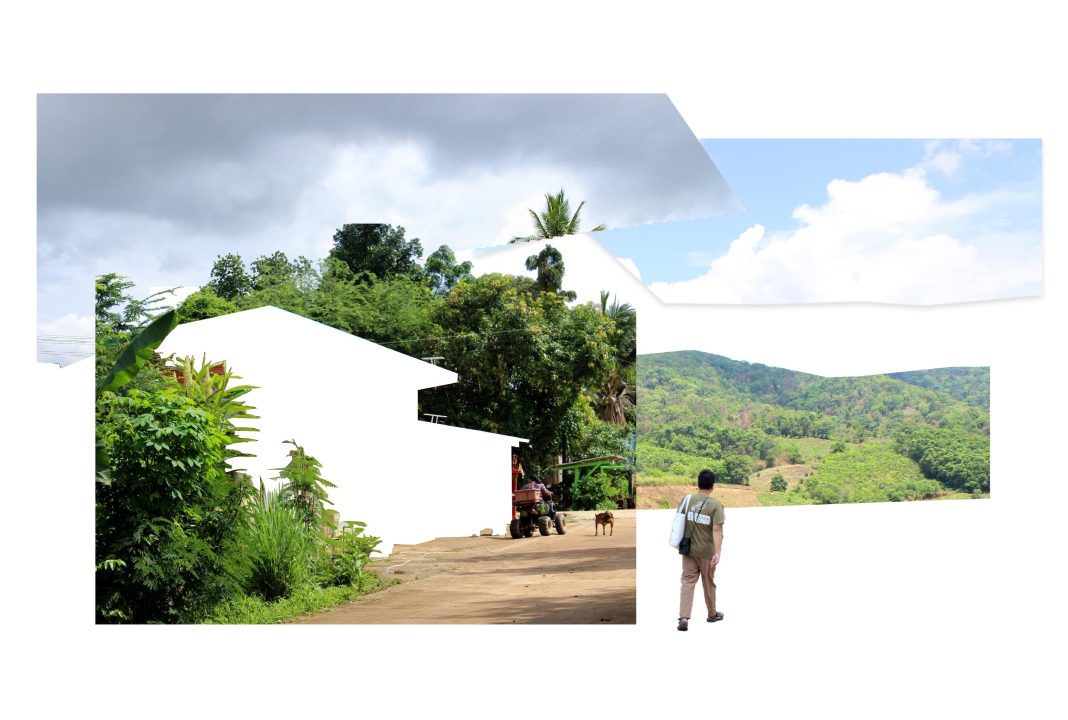Climate change is already impacting human migration and displacement.
Extreme weather events displace tens of millions of people every year, while multi-year droughts and rising sea levels are making many densely populated regions increasingly hostile to human habitation.
However, the link between climate change and migration is complex.
A person’s decision to leave home depends on a range of factors, including their socioeconomic situation, their family connections and the politics of their home country.
To better understand these interlocking factors, an EU-funded research project known as HABITABLE is carrying out tens of thousands of interviews with rural communities in Sudan, Ethiopia, Ghana, Mali and Thailand.
The four-year project, which ends later this year, aims to “significantly advance our understanding of the current interlinkages between climate change impacts, migration and displacement patterns, and to better anticipate their future evolution”.
The team will use their findings to help develop “guidelines and recommendations to allow policies to better address the migration patterns associated with climate change”.
For Thailand specifically, researchers from the Raks Thai foundation conducted more than 1,000 surveys over several months in 2023, travelling to 63 farming villages in the provinces of Chiang Rai and Udon Thani.
Carbon Brief’s science writer, Ayesha Tandon, joined researchers in June 2023 as they interviewed farmers in the Chiang Rai province.
Climate change and migration in Thailand
Thailand is a middle-income country, which the World Bank touts as a “development success story”. However, the country is also highly vulnerable to the impacts of climate change.
The 2021 Global Climate Risk Index – which assesses damage caused by “weather-related loss events”, such as heatwaves, storms and floods – ranks Thailand as the ninth “most affected” country in the world. Between 2000 and 2019, the country recorded 146 such events, resulting in a 0.82% loss of GDP, it finds.
The World Bank (pdf) describes Thailand as “one of the most flood-prone countries in the world”. For example, in 2011 a record-breaking flood – known as “the great flood” – swept across northern, north-eastern and central Thailand. The flood affected more than 13 million people, damaged 20,000 square kilometres of farmland and caused $46.5bn in losses, making it the world’s fourth costliest disaster on record at the time.
Thailand’s tropical climate is already shifting as a result of climate change. The plot below shows how average temperatures have changed in Thailand over 1890-2022, relative to a 1971-2000 baseline. Red indicates hotter than average temperatures, and blue indicates colder than average.
Change in average temperatures in Thailand over 1890-2022, relative to a 1971-2000 baseline, using Berkeley Earth data. Source: Show your stripes
A 2020 report (pdf) by the UN Office for Disaster Risk Reduction (UNDRR) says that the country’s average annual temperature rose by 0.95C between 1955 and 2009 – notably higher than the global average of 0.69C.
It adds:
“Between 2006-10, Thailand experienced longer dry spells in the middle of the rainy season, and more intense rain afterwards, exacerbating seasonal stress due to changes in the regional weather patterns.”
The report finds that “already, farmers are subjected to impacts of flooding and droughts annually, leading to crop losses and low productivity, indebtedness and low household earnings”.
Agriculture is a key part of Thailand’s economy. In 2019, around one-third of Thailand’s 70 million inhabitants was employed in agriculture, accounting for more than 8% of the country’s GDP. The country is the world’s largest exporter of rubber and second-largest exporter of rice.
The 2019 Thailand migration report by the UN says that “as a consequence of the declining number of Thai nationals willing to pursue agricultural work, the sector has increasingly come to depend on migrant workers”.
Thailand shares four land borders with Myanmar, Laos, Cambodia and Malaysia. The report estimates that there are currently hundreds of thousands of “regular migrants” from Cambodia and Laos who come to Thailand to plant and harvest crops. These migrants collectively send billions of dollars of money back home to their families every year, it finds.
Meanwhile, the report says Thai migrants typically go to Taiwan, Israel, Japan, Korea, Malaysia and Singapore. The money that Thai migrants send back home to their families contributed to around 1.5% of Thailand’s GDP in 2017, the report finds.
Carbon Brief’s science writer, Ayesha Tandon, joined researchers in June 2023 as they interviewed farmers in four Thai villages – Juam Krai, Huay Nan, Rakstin Thai and Phaya Lao-U – to learn more about their perceptions of climate change and migration.
The missing generation
Juam Krai village is made up of 50-60 households, many of whom migrated there decades ago from north-eastern Thailand. However, the population is ageing rapidly.
One villager travelled abroad in search of better-paid work years ago. After setting up a base, he began sending some money home to his family. Soon, friends and family members began to join him, attracted by the prospect of high wages.
Thaowan Giorno – a Raks Thai environmental programme assistant – explains that this dynamic is common. Social ties can make people less scared to migrate to new countries, she says, so it is common for a succession of people to leave to one place.
Thaowan Giorno, a Raks Thai environmental programme assistant.
She praises the bravery of those first migrants. “This was their biggest investment,” she marvels. However, she adds that as more and more working-age people migrate abroad, children and elderly people are often left behind.
Thaowan speculates about the social and behavioural problems that children may develop, when left in a village devoid of people in their 20s, 30s and 40s.
Tanat Sai-inta (aka Josy) – a seasoned Raks Thai interviewer – explains that the missing middle generation can also be detrimental for the elderly people left behind. They receive money from their family in the form of remittances, but nobody is around to look after them when they need help.
– Interview with Tanat Sai-inta (aka Josy), a Raks Thai interviewer.


